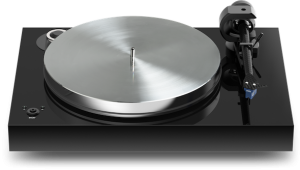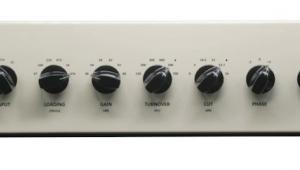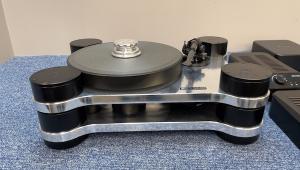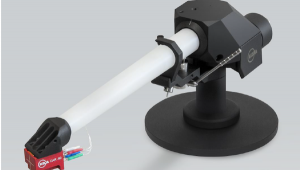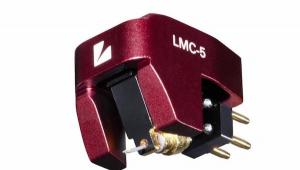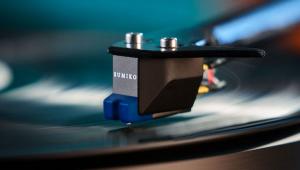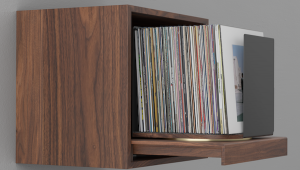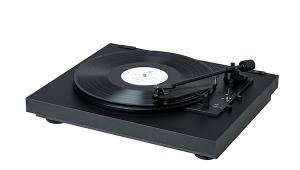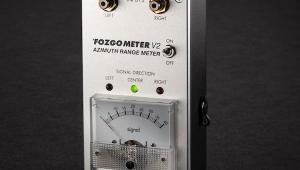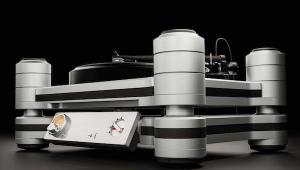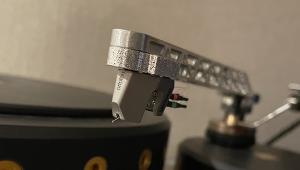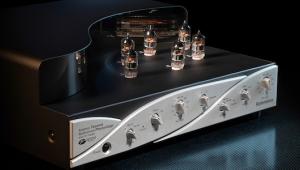Kind of a curious device, no? stepdown/regulation/rectification/smoothing in one box to keep the noise down but an ADC, apparently sharing the DC supply, near the audio signal path. It does look as if they did a decent job screening the digital board though. And the price is right.
Vincent Audio’s PHO-701 Is a Classy Hybrid Two-Chassis MM/MC Phono Preamp Option
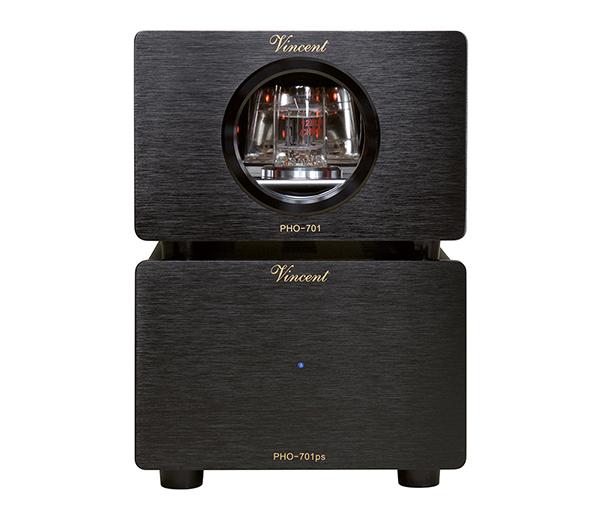
Vincent Audio knows from phono preamps, and the company’s PHO-701 MM/MC hybrid two-chassis model now emerges in the wake of its vaunted PHO-700 predecessor. First, the two-chassis PHO-701 MM/MC is said to improve upon the PHO-700 by offering added adjustability to match your cartridge options, and second, it also includes a USB output.
The PHO-701 performs its RIAA correction for ultra-low distortion, and it also has a single phono input, which can be switched to accommodate low-output MC cartridges or MM/high-output MC cartridges. The ability to fine-tune the input to accommodate a wide range of phono cartridges occurs via dip switches on the bottom of the unit, enabling the adjustment of input capacitance and input impedance. (Any respective phono cartridge user guides should offer the recommended settings.)
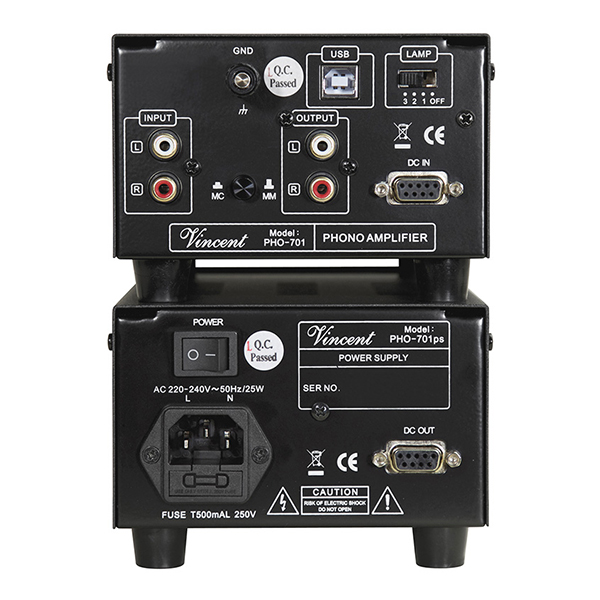
As for the USB-inclined amongst us, note that the PHO-701’s built-in A/D converter contains a CS5340 chip made by Cirrus Logic. The output is fixed at 24-bit/192kHz, and it uses a USB connection. When you plug the PHO-701 into a PC or Mac, the device will recognize the PHO-701 by the name “USB-Audio.”
The PHO-701 houses its power supply in a completely separate chassis for, in the company’s verbiage, “pristine signal quality.” Separate cases for audio and power supply circuitry are said to isolate the signal chain from AC distortion and interference.
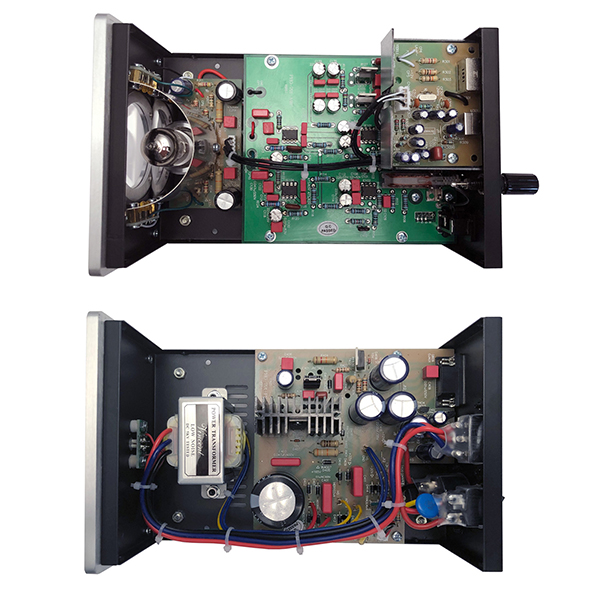
With the PHO-701, Vincent Audio has omitted the typical AC power adapter, opting instead for a specially designed outboard power supply said to assist the PHO-701 in achieving low-noise performance. The PHO-701 uses the same power supply already employed in Vincent’s PHO-8 phono preamp. It is connected to the separate-chassis audio circuitry using a nine-pin DIN cable. The voltage is highly regulated and filtered, intended as such so the ripple and hum found in unconditioned AC power out of the wall will not reach the phono section. Intended result: The audio circuitry is said to only receive clean power.
Looking through the front-panel window of the PHO-701 reveals a 12AU7 vacuum tube inside, used in dual triode mode. High-quality componentry from Nichicon, WIMA, and other companies are said to improve the parameters of S/N ratio and amplification.
Vincent Audio’s two-chassis PHO-701 MM/MC phono preamp has an SRP of $799.95.
With all this in mind, it sounds to me like the PHO-701 is worthy of a hands-on AP review, don’t you think?
For more about Vincent Audio, go here.
To find an authorized Vincent Audio dealer near you, go here.
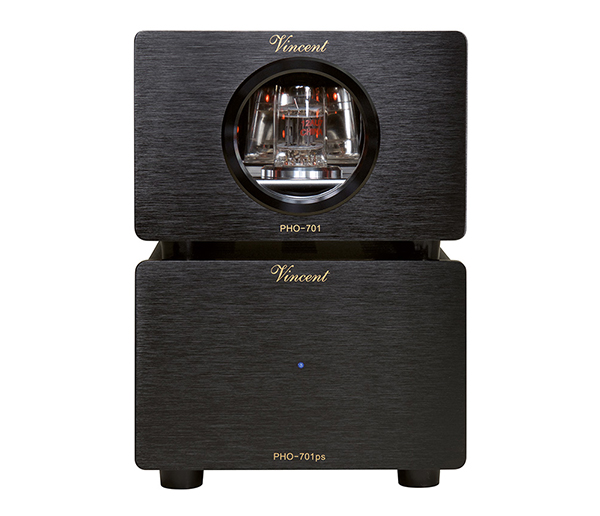
VINCENT AUDIO PHO-701 MM/MC HYBRID PHONO PREAMP
($799.95)
Specs
RIAA tolerance/deviation: 10Hz - 20kHz (max. 0.5dB)
Output impedance: 250ohms
Input sensitivity (MM): 58mV
Input sensitivity (MC): 6.8mV
Input impedance (MM): 47kohms
Input impedance (MC): 100ohms
Distortion: <0.05%
Signal-to-noise (S/N) ratio: MM >81dB; MC >69dB
Dimensions (w/h/d): 130 x 82 x 225mm (2x)
Weight: 2.7kg (PHO-701ps: 1.5kg; PHO-701: 1.2kg)
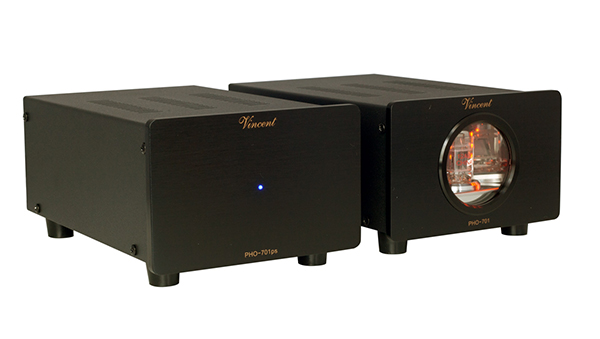
- Log in or register to post comments


HI
Well, the ADC is sharing the LINEAR power supply with the audio section, far better than some brandname preamps using cheapie noisy switched mode power supply (SMPS) selling for much much more.
From the chassis layout view above, the complete shielded USB compartment is installed over & above the main chassis. Thoughtful job to minimize EMI noise to the amp section.
For a lousy $800 to own a MC/MMC phono-preamp with hybrid chip/tube design using a separate linear power supply is a huge bargain !!!
Yet, there is no indication of its country of origin. Could it be made by an OEM off shore to achieve such bargain price ???
Jack L

I believe I said the price was right and they did a nice job separating the the digital board. We appear to agree. So what, in your view, did I get wrong?
And I stand by my view that it's a curious device; I'm not convinced that the customer for a tube MC phono pre is the same as the person looking for the USB output capability. As always, the market will decide.
Incidentally (and I'll let the smart people on this 'site chime in here) I think Vincent's products are designed in Germany and built in China.

Hi
Glad you bring this up. To achieve such bargain price, "made in China" is the way to go like many brandname audios already OEM built in China years years back. That's why there is no indiction of the hybrid premp's country of origin - not to downgrade the "made-in-Germany" reputation ! Marketing tactics, my friend !
Yes, I agree to your above post in general.
Only when you said it is "kind of a curious device", you apparently qualify your above statement by "stepdown/regulation/rectification/..." instead of stating what your "curious" really means just HERE :
"I am not convinced the customer for a tube MC phono is the same as the person looking for the USB."
I agree an MC preamp analogue guy will not want any digital stuff inside as well - for purely sonic reason !
Listening to analogue to believing
Jack L

"Vincent Audio has omitted the typical AC power adapter, opting instead for a specially designed outboard power supply".
Typical? In an $800 product - an el cheapo wall wart's typical? Really? Looking at just phono preamps around that price point reveals that wall wart power supplies are, in fact, not typical. You have to dive down to the ultra-budget region below a hundred bucks or so to find "typical" wall wart powered phono preamps.
"The voltage is highly regulated and filtered, intended as such so the ripple and hum found in unconditioned AC power out of the wall will not reach the phono section."
Wow. Whew. Impressive. So, does that mean that Vincent's doing something extra here with their linear power supply? Something super-special? Something hardly anyone else's offering? Cause that's the loud and clear implication of that statement.
Or, isn't that what any AC to DC power supply's supposed to do from the get go? Like, that's the whole purpose of a power supply to begin with, yo?
Golly gee, I don't know. I guess I'll believe anything a salesman tells me.
Rock on.



